This is an update from a story written by Chris before his hair transplant repair. Read Chris’ story before his repair here.
Hair restoration surgery can be life-changing, but it’s also a field fraught with risks—especially when patients fall prey to unqualified clinics and misleading marketing. In this article, we dive into the real-life story of Chris, who experienced a painful and damaging hair transplant abroad, and the expert repair work by Dr. Christian Bisanga, a hair transplant surgeon from Belgium and ISHRS member. Their conversation highlights the crucial red flags to watch out for, the devastating impact of overharvesting donor areas, and the importance of thorough research before undergoing any hair restoration procedure.
Watch the Conversation with Dr. Bisanga
In this video, Chris shares his story and Dr. Bisanga shares what he did to repair the botched hair transplant.
Chris’s Story: From Hope to Heartbreak
Chris, who resides in Poland, decided to pursue a hair transplant during a difficult period in his life, hoping a change in his appearance might boost his confidence. Encouraged by a friend who had recently traveled overseas for a transplant, Chris reached out to a clinic overseas after finding local prices too high. The clinic offered a much lower price, and despite some initial hesitations, he quickly booked the procedure. Unfortunately, this rushed decision led to a deeply disappointing and traumatic experience.
From the start, there were red flags. Chris communicated primarily with a salesperson over WhatsApp, who pushed aggressively to secure his booking. There was no proper medical consultation, no detailed explanation of the procedure, and no personalized hairline design. The clinic assured him a doctor with 15 years of experience would perform the surgery, but upon arrival, Chris met only a translator and a technician. The doctor was nowhere to be seen.
The surgery lasted around five hours, but the results were far from what Chris expected. Instead of a subtle enhancement to his temples, the clinic implanted roughly 4,000 grafts—almost double the number Chris requested—across his recipient area, including places where he had native hair. The hairline looked unnatural, resembling “sticks” or “palm trees,” and his donor area suffered severe shock loss, losing much of the remaining hair.
Key Red Flags of Black Market Clinics
Chris’s story is unfortunately not unique. Many clinics, especially those heavily marketed on social media, prioritize volume and sales over patient care. Here are some critical warning signs to watch out for:
- Aggressive sales tactics: Persistent calls or messages pressuring you to book quickly are a major red flag.
- Lack of medical consultation: No direct examination by a qualified doctor or personalized treatment plan.
- Unclear or missing credentials: Doctors who don’t speak your language or are not members of recognized international societies.
- No transparency on graft numbers or donor management: Overharvesting donor areas without clear explanation or use of proper tools like microscopes and loops.
- Misleading marketing: Instagram pages with only perfect smiles and no photos of donor areas post-surgery; fake followers and staged images.
- No proper post-operative care: Bandages removed by non-medical staff, lack of cleaning or follow-up support.
Chris urges anyone considering a hair transplant to request photos of the donor area immediately after the procedure to verify that grafts were harvested carefully and correctly.
The Devastating Impact of Overharvesting the Donor Area
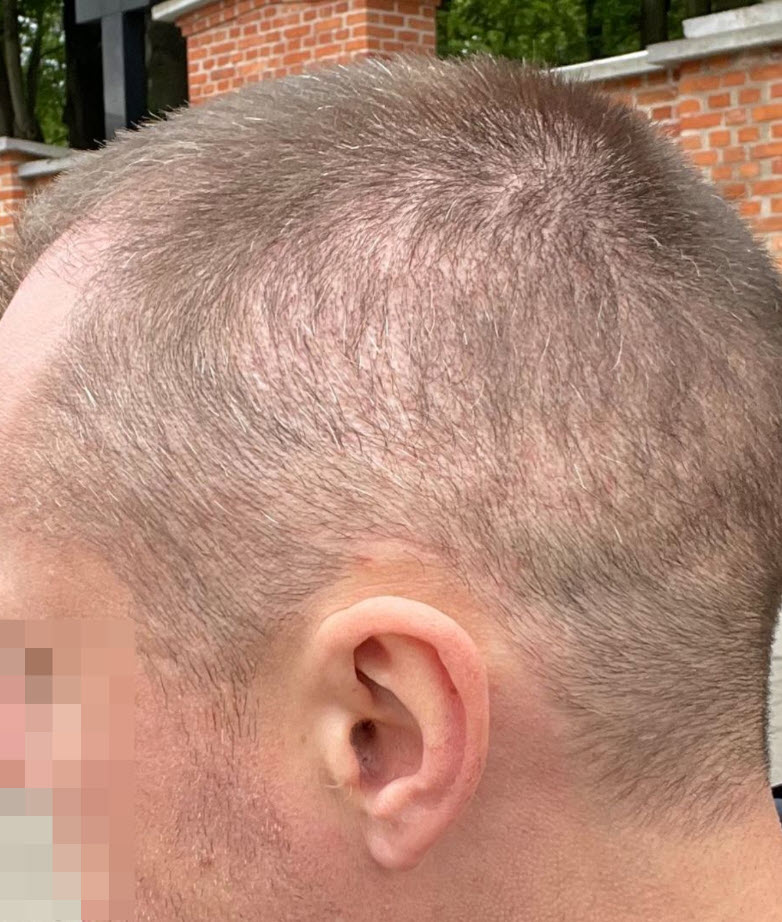
The donor area—the back and sides of the head—provides the hair follicles for transplantation and is a limited resource. Overharvesting this area can cause permanent damage, including:
- Shock loss, where remaining healthy follicles die or go dormant due to trauma.
- Visible scarring and thinning in the donor region.
- Reduced options for future transplant sessions, as donor hair may no longer be available.
In Chris’s case, the clinic took around 4,000 to 4,500 grafts, far exceeding what was needed or requested. This caused severe shock loss and destruction of the donor area, resulting in thinning and scarring that even local doctors could not confidently predict would improve.
Dr. Bisanga’s Repair Approach: Healing and Hope
When Chris came to see Dr. Bisanga, his hairline was unnatural and patchy, and his donor area heavily damaged. The psychological toll on Chris was immense, with depression and stress impacting his quality of life.
Dr. Bisanga’s repair strategy involved several key steps:
- Removal of poorly placed grafts: Up to 1-2 cm of transplanted hair was removed, especially from areas above the ears where the damage was most severe.
- Minimizing scarring: Careful suturing techniques were used to promote healing with minimal visible scars, especially important given the trauma Chris experienced.
- Gradual restoration: Over multiple sessions spaced months apart, Dr. Bisanga carefully harvested new grafts from less damaged donor areas and transplanted them to rebuild a natural-looking hairline.

The goal is to perform a removal, which may require up to two sessions, followed by reconstructing a proper hairline. The main challenge is the severely compromised donor area, with some sections showing a density as low as 30 follicular units per cm².
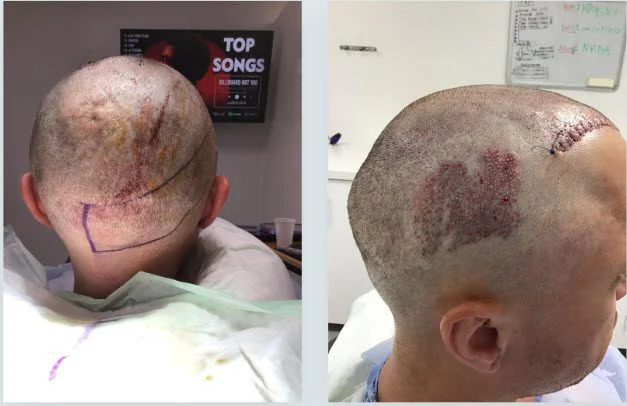
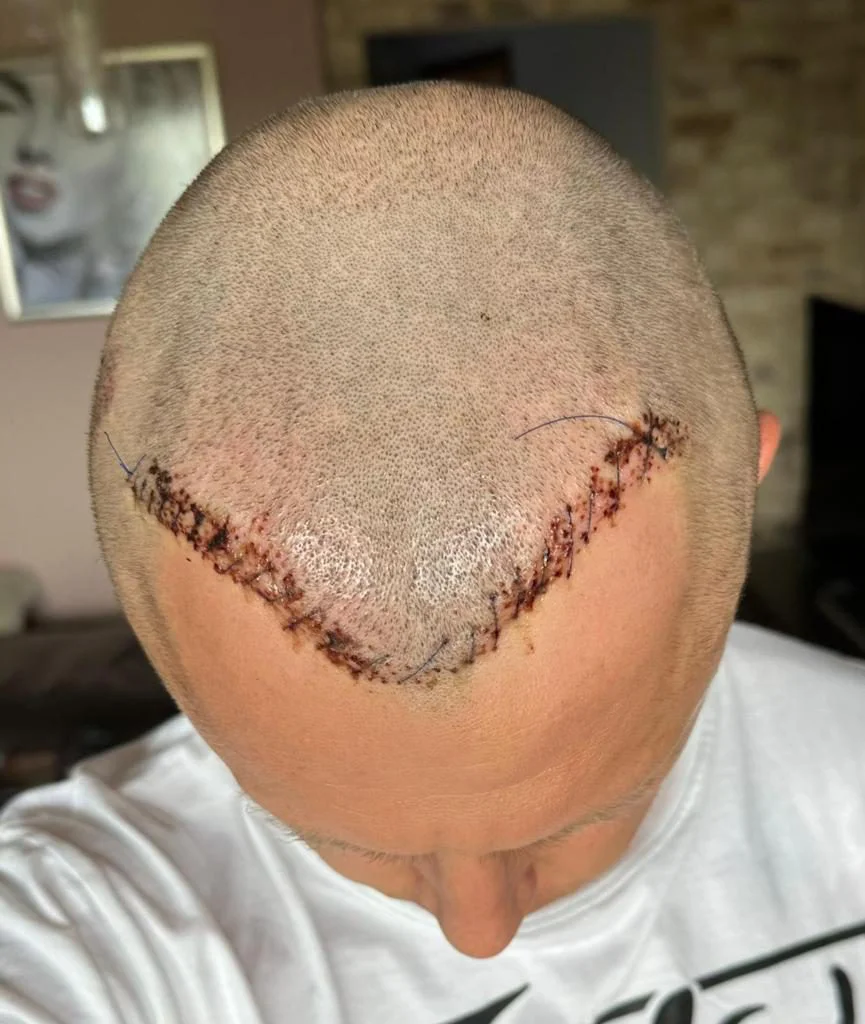
After two removal sessions and 650 grafts transplanted during the repair process, Chris’s hairline was significantly improved and more natural in appearance. The repair process was challenging, but it provided Chris with options for the future and a chance to regain confidence.
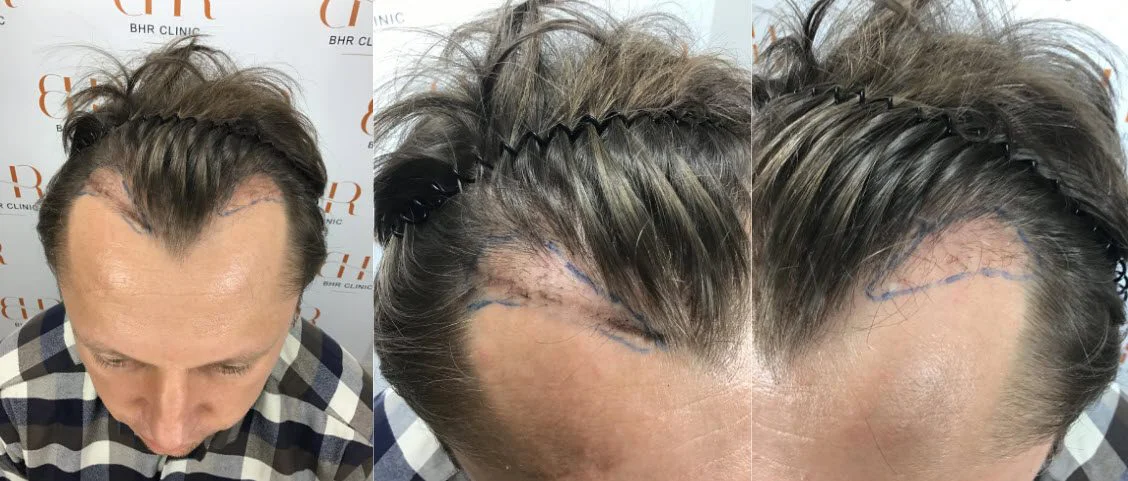
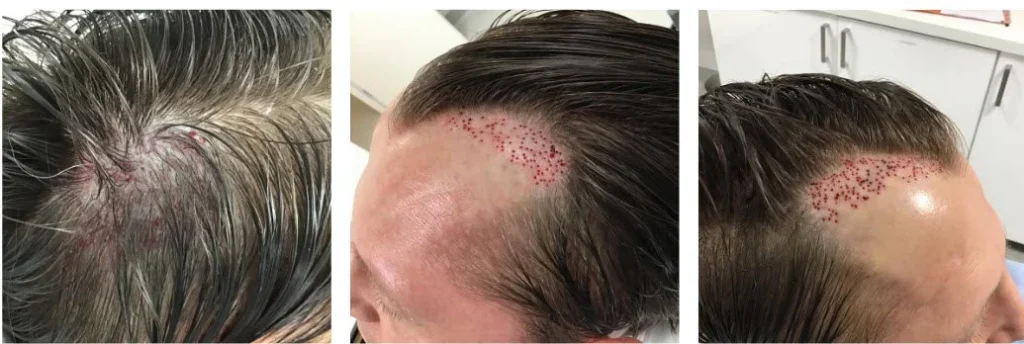
Lessons Learned: Prioritize Research and Caution
Chris’s experience underscores the importance of thorough research and patience before undergoing hair restoration surgery. Key takeaways for anyone considering a transplant include:
- Don’t rush: Take the time to understand the procedure, costs, and risks. Saving money upfront can lead to costly and emotionally painful repairs later.
- Verify credentials: Ensure your surgeon is a qualified medical doctor, ideally a member of international organizations like the ISHRS.
- Meet your doctor: Have a face-to-face consultation to discuss expectations, techniques, and personalized plans.
- Demand transparency: Ask for detailed information on graft numbers, donor management, and post-operative care.
- Beware of social media marketing: Photos on Instagram can be misleading; seek real patient reviews and before-and-after images from multiple angles.
- Remember the donor area is finite: Overharvesting can cause permanent damage and limit future options.
As Dr. Bisanga emphasizes, “It’s better to be bald than have a bad hair transplant.”
Final Thoughts
Hair restoration surgery has the potential to transform lives, but it must be approached with care, knowledge, and the right medical expertise. Chris’s story is a powerful reminder to prioritize safety and research over price or convenience, and to seek trusted professionals who uphold the highest standards of care.
For those considering hair transplant surgery, resources on this website such as questions you should ask, offer guidance on finding qualified doctors and understanding the latest advancements in hair loss treatment.
Remember, your hair—and your health—are worth the investment.
If you have been a victim of a botched hair transplant by unlicensed technicians, contact us to share your story.